A-League clubs continue to struggle with costs and management of stadiums
FROM plastic daggers in the turf to a sellout crowd, as the A-League waits on a decision on expansion, never has the importance of fixing the competition’s stadiums been so clear.
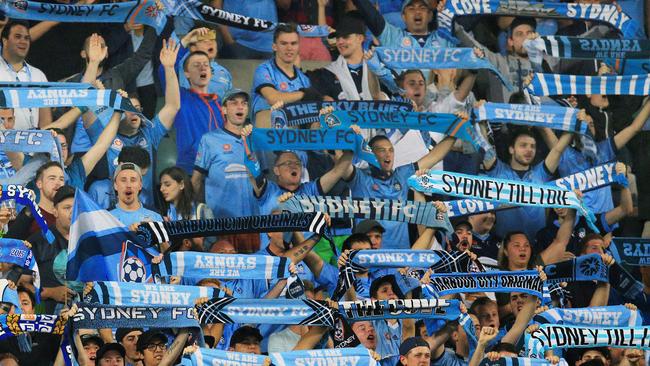
A-League
Don't miss out on the headlines from A-League. Followed categories will be added to My News.
FROM plastic daggers in the turf to a sellout crowd, this has been a week to illustrate the good, the bad and the Spotless among A-League stadiums.
As the competition waits for a decision on expansion, never has the home bases of its constituent clubs been a more important factor right across the league.
Over the next year, decisions will be made in myriad contexts that could have a huge impact on the A-League’s venues as it grapples with reigniting fan interest.
Key to that is a sense of belonging, fostered by the tribalism and electric atmosphere previously created by active support groups like the RBB, The Cove and the North Terrace. That was the A-League’s unique selling point — and the stadium is vital crucial to that.

The surface prepared at Spotless Stadium last weekend for Western Sydney was abysmal, but it is a short-term issue for a club that in eight months’ time will play its first game at a state-of-the-art new Parramatta Stadium which — crucially — the Wanderers had a say in designing.
The club’s three priorities — a safe-standing area, the steepest stands in Australia and positioning those stands close to the pitch — were all achieved after intensive lobbying.
That’s doubly important when almost all clubs have no chance of owning their own venues. The Western Melbourne consortium bidding to join the league has promised to pay for one, but otherwise it is still a pipedream, for all that the upswing in the fortunes of the MLS in America can be traced to billionaire owner Lamar Hunt building the first football-specific stadium for Colombus Crew in 1999.

Now 13 of the MLS’s 16 teams have their own grounds, opening up revenue streams and pitch control of which A-League clubs can only dream.
Given that, the question is how to make the venues here feel like a club’s home, rather than a rental property. That requires engaged, persuasive club owners on one side, and stadium management and governments on the other who value their football tenants and want to work effectively with them.
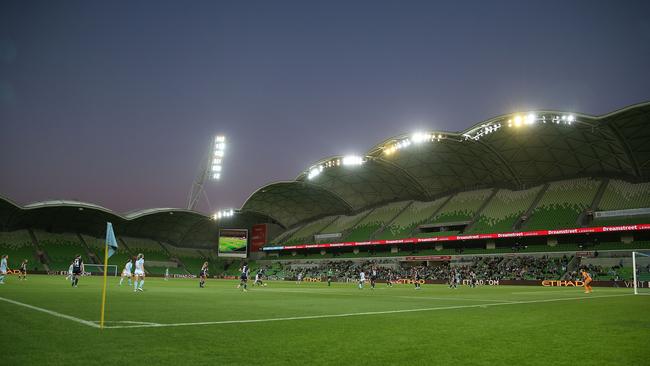
In some cities those relations are good. Newcastle are midway through a five-year deal at McDonald Jones Stadium in which CEO Lawrie McKinna emphasises the productivity of the working relationship.
Similarly in Melbourne, AAMI Park offers the holy trinity of appropriate size, excellent surface and collaborative management to benefit both Victory and City.
Elsewhere the outlook is rather more mixed. Sydney FC have begun a three-year homeless period while Allianz Stadium is rebuilt, a period of pain that should be worth it, on the surface at least.
But initial plans to give the 46,000-seat venue two “modes” — where the top tier could be covered over with an electronic screen to create a sense of intimacy for regular games — were quietly dropped by the NSW Government on grounds of cost.

Given Allianz’s tenants — Sydney FC, the Waratahs and the Roosters — have all averaged less than 15,000 in their regular seasons over the past year, the prospect of them playing in a brand new stadium that usually stands two-thirds empty makes no sense.
Sydney FC chairman Scott Barlow would only say that “having different modality options remains hugely important to us”, but behind the scenes there is a lot of lobbying going on of the government to revert to the original plans, by all sorts of stakeholders.
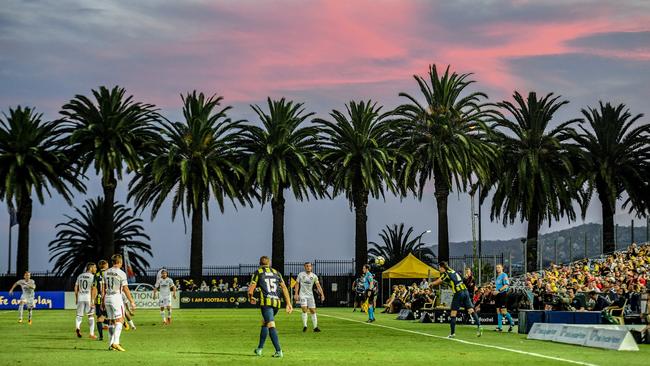
Some 90 minutes up the F3, Central Coast Stadium is — in theory — a perfect A-League stadium, at least in terms of size.
The issue for the Mariners is the way its management ended up with Gosford Council almost by accident. For a cash-strapped regional council, investing in stadiums is not a priority.
Though the Mariners are about to sign a new three-year tenancy, the club still hopes it could supersede that by buying the management rights from the council — achieving something no other club has managed.
The Mariners would suddenly be the recipients of all food and drink sales, of naming rights income. Under a plan put together by the club two years ago, the off-season would be used to host music gigs and similar, with the proceeds paying for a new pitch each year.
For the first time local councillors are said to be questioning the wisdom of them running the stadium, but there is one potentially galvanising influence that may come into play.
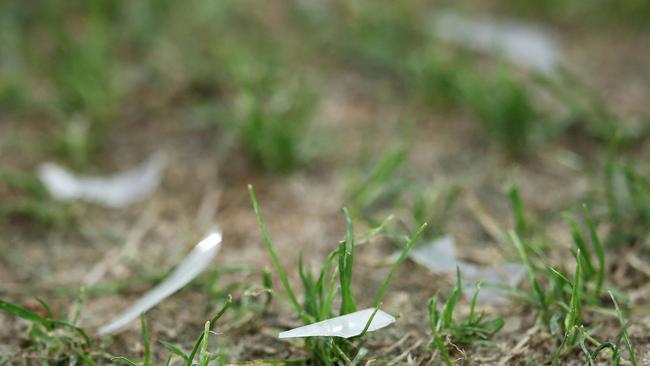
By next June, FFA should know if it is successful in securing the Women’s World Cup in 2023, a competition that is likely to need several FIFA-compliant medium-sized venues.
Could that be the catalyst to spark investment in Central Coast Stadium, in Adelaide’s Hindmarsh venue — and even the building of a new stadium in Brisbane?
Hindmarsh is regularly rated one of the best A-League grounds for atmosphere, but it suffers badly from a lack of roof coverage, of corporate facilities, even parking. At the election earlier this year the Labor government promised an upgrade, but was voted out of office.
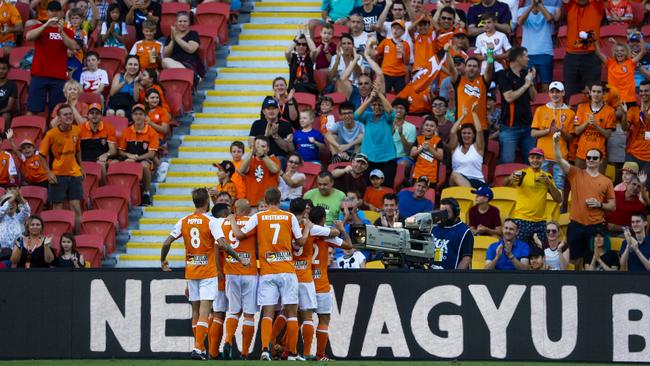
Brisbane Roar, meanwhile, currently have no choice but to play at the 52,000-capacity Suncorp Stadium — outstanding when full, but painfully empty most of the time and with a too-often substandard pitch.
The Women’s World Cup could be the impetus to persuade Queensland’s government to finally move on building a venue half Suncorp’s size, and which would be perfect for Brisbane Roar. This is the sort of area FFA’s new board can pursue, lobbying state governments to provide the stadiums we need.
Similarly, the quality of the stadiums will be a major factor for the board in choosing two new A-League sides. Some bids promise new venues, others upgrades of existing ones.
Whichever are chosen, this is has to be the point at which the A-League clubs start to exert every ounce of control they can over how their home stadiums are run.
Get every match of the 2018/19 Hyundai A-League LIVE. SIGN UP NOW!
